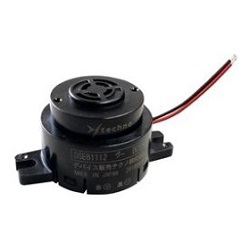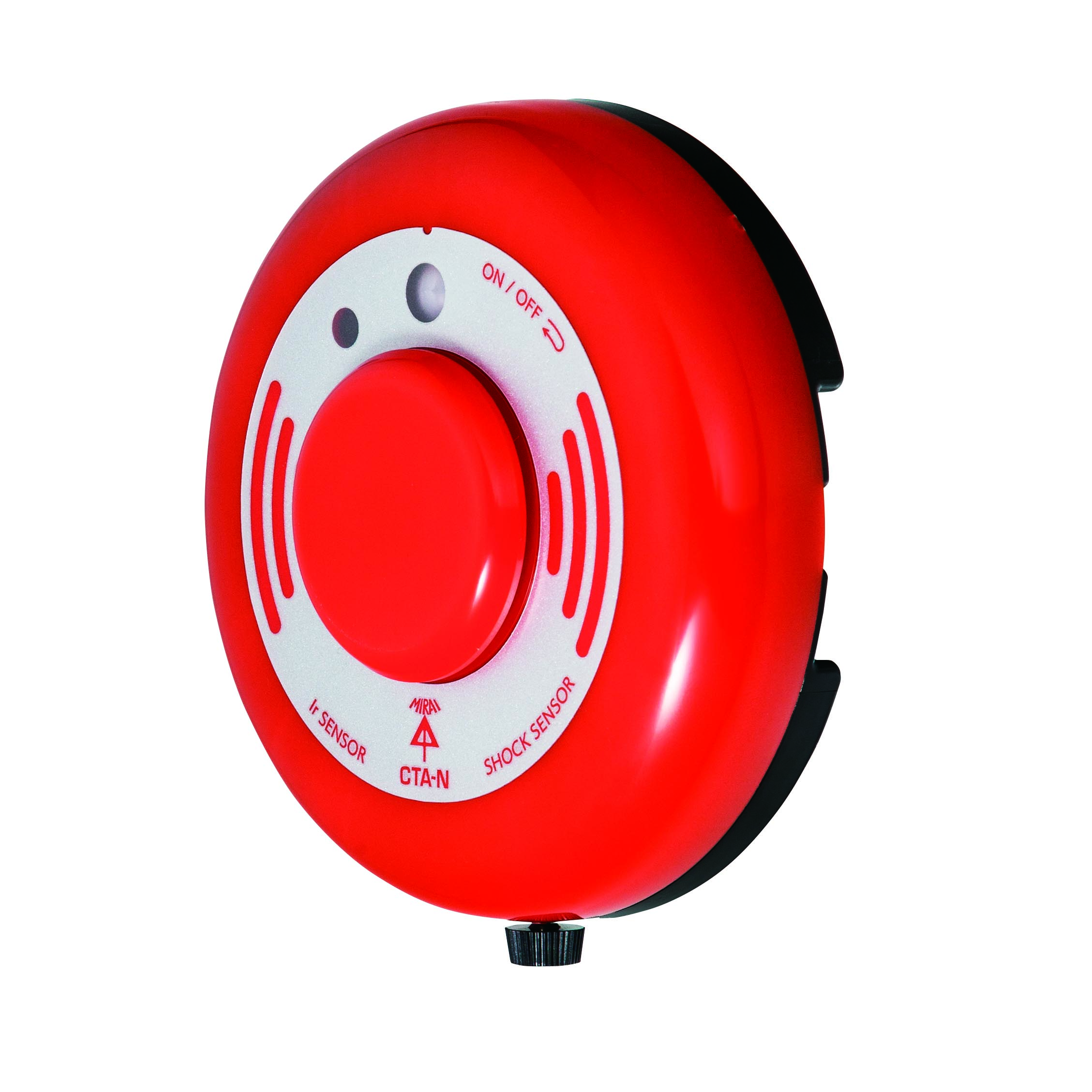(!)NOTE : Windows 7 users won’t be able to use some latest features of eCatalog/WOS since Microsoft is ending support for Windows 7 on 14 Jan, 2020. Please upgrade your system for uninterrupted services.
- Notice of End of Sales for Economy Series Pneumatic Equipment Category. More information.
Alarms/Buzzers(Shape:Round)
Take advantage of the convenience of FREE SHIPPING and NO MINIMUM ORDER on a buzzer. If you have any doubts or require assistance in choosing the right product, our experts are readily available to provide
Brand |
|
|---|---|
| CAD |
|
| Days to Ship |
|
2 items
- Sort By
-
You can add up to 6 items per a category to the compare list.

Electronic Buzzer for High-Volume Appliances (DSEB11 **)
D.S.TECHNOLOGY
Panasonic, buzzer EB series electronic buzzer compatible with mounting.
Volume(dB) Product Type Rated Voltage(V) Shape Sound Types of sound Volume adjustment Terminal shape Dimension width(mm) Protection function (IP/drip-proof, etc.) Representative Standard Dimension length(mm) Dimension thickness(mm) 88±10 - DC24V Round Intermittent Peak - - - - - - - From: ₹ 2,582.78 Days to Ship: 6 Day(s) or more  6 Day(s) or more
6 Day(s) or more
-
You can add up to 6 items per a category to the compare list.

MIRAI INDUSTRY
[Features]
・ Two sensors protect the material from theft.
(1) Catch the movement of the intruder with the infrared sensor.
(2) Catch the shaking of materials with the vibration sensor.
・ Alarm call and LED lamp threaten intruders.
・ No wiring required. Dry cell battery type. Simple waterproof.Volume(dB) Product Type Rated Voltage(V) Shape Sound Types of sound Volume adjustment Terminal shape Dimension width(mm) Protection function (IP/drip-proof, etc.) Representative Standard Dimension length(mm) Dimension thickness(mm) - - - Round - - NA - - Available - 112.4 - From: ₹ 10,288.59 Days to Ship: 6 Day(s) or more  6 Day(s) or more
6 Day(s) or more
| Brand |
|---|
| Product Series |
| From |
| Days to Ship |
| Volume(dB) |
| Product Type |
| Rated Voltage(V) |
| Shape |
| Sound |
| Types of sound |
| Volume adjustment |
| Terminal shape |
| Dimension width(mm) |
| Protection function (IP/drip-proof, etc.) |
| Representative Standard |
| Dimension length(mm) |
| Dimension thickness(mm) |
You can add up to 6 items per a category to the compare list. | You can add up to 6 items per a category to the compare list. | |
| Brand | D.S.TECHNOLOGY | MIRAI INDUSTRY |
| Product Series | ||
| From | ₹ 2,582.78 | ₹ 10,288.59 |
| Days to Ship | 6 Day(s) or more | 6 Day(s) or more |
| Volume(dB) | 88±10 | - |
| Product Type | - | - |
| Rated Voltage(V) | DC24V | - |
| Shape | Round | Round |
| Sound | Intermittent | - |
| Types of sound | Peak | - |
| Volume adjustment | - | NA |
| Terminal shape | - | - |
| Dimension width(mm) | - | - |
| Protection function (IP/drip-proof, etc.) | - | Available |
| Representative Standard | - | - |
| Dimension length(mm) | - | 112.4 |
| Dimension thickness(mm) | - | - |
Loading...
Configure
Specification/Dimensions
-
Volume(dB)
-
Product Type
- Alarm / Buzzer Unit
- Other
-
Rated Voltage(V)
- DC24V
- AC100V
- Other
-
Shape
-
Sound
- Continuous
- Intermittent
-
Types of sound
- Peak
- Boost
- Voice/music
- Other
-
Volume adjustment
- Available
- NA
-
Terminal shape
- Solder terminal
- Screw terminal
- Other
-
Dimension width(mm)
-
Protection function (IP/drip-proof, etc.)
-
Representative Standard
-
Dimension length(mm)
-
Dimension thickness(mm)
Related Categories to Alarms/Buzzers
FAQ Alarms/Buzzers
- Question: How do buzzers function in electrical circuits?
- Answer: Electromagnetic buzzers use an electromagnetic coil to generate a magnetic field. This field attracts a movable diaphragm, causing mechanical vibrations. As the diaphragm moves back and forth, it produces sound waves, resulting in the audible buzzing or beeping sound. Connected to an electrical circuit, the buzzer is activated when current flows through the coil. It's important to note that there are different types of buzzers, including electromagnetic, piezoelectric, and magnetic-transducer buzzers. Each type operates on different principles
- Question: What are the typical uses of buzzers in various industries?
- Answer: Buzzers are widely used in various industries for signaling and alerting. Here are some typical uses of buzzers in different industries such as:
1. Automotive industries: In vehicles, buzzers are employed for warning signals, such as seatbelt reminders, and low fuel indicators.
2. Medical Industries: Medical devices use buzzers for alarms and notifications, such as indicating the end of a medical procedure or alerting healthcare professionals to specific conditions.
3. Industrial Automation: Buzzers are used in manufacturing and industrial settings to signal the completion of processes, indicate faults, or alert operators to specific events.
4. Security Systems Industries: Alarm systems and security devices use buzzers to produce loud alerts in the event of a breach, fire, or other security concerns. - Question: What differentiates piezo buzzers from electromagnetic buzzers?
- Answer:
This table summarizes the key differences between piezo buzzers and electromagnetic buzzers in terms of their operating principles, mechanisms, sound frequency ranges, efficiency, size, and common applications.
Feature Piezo Buzzers Electromagnetic Buzzers Operating Principle Crystal deformation Diaphragm driven by electromagnet Mechanism Crystal vibrations directly produce sound Diaphragm or armature physically moves to create sound Sound Frequency Range Narrow, often in ultrasonic or audible range Broader range, capable of various frequencies Efficiency High efficiency, fast response time Variable efficiency, may have slower response time Size and Weight Generally smaller and lighter Tends to be larger and heavier Applications Compact designs, low power, high-frequency Various applications, broader frequency requirements - Question: What factors determine the loudness of a buzzer?
- Answer: 1. Power Input: Higher electrical power results in increased loudness.
2. Design and Construction: Physical characteristics impact efficiency.
3. Resonance Frequency: Operating at resonant frequency maximizes loudness.
4. Voltage and Current: Increased levels within limits enhance sound output.
5. Environmental Conditions: Surrounding factors influence perceived loudness.
6. Transducer Efficiency: Efficient transducers produce more sound.
7. Sound Output Mechanism: Different mechanisms impact loudness.
8. Duty Cycle: Continuous operation may enhance perceived loudness.
9. Frequency Range: Some frequencies are more noticeable or louder than others. - Question: Can buzzers be considered a form of sound energy?
- Answer: Yes, buzzers can be considered a form of sound energy. Sound energy is a type of mechanical wave that propagates through a medium, such as air, water, or solids. When a buzzer is activated, it typically produces vibrations that create compressions and rarefactions in the surrounding air, generating sound waves. These sound waves carry energy in the form of vibrations, and when they reach our ears, they are perceived as sound.
- Question: How do you integrate a buzzer into a security system?
- Answer: Incorporate a buzzer into a security system by linking it to a controller, such as Arduino or Raspberry Pi. Ensure proper power alignment, connect to a digital output pin, and code the buzzer to respond to security events like unauthorized access detected by sensors.Thoroughly test and calibrate the system, considering backup power.
- Question: How do you choose the appropriate buzzer size and sound level for different environments?
- Answer: Select a buzzer size based on space constraints and application requirements. For quiet environments, opt for smaller, less powerful buzzers to minimize disturbance. In noisy settings, choose larger buzzers with higher sound levels for better audibility. Consider dB ratings to match ambient noise levels; quieter environments need lower dB, while louder surroundings require higher dB ratings. Always test in the specific environment to ensure the chosen buzzer meets the desired sound level without being excessively disruptive or inadequate for the given conditions.
- Question: What are the main considerations when connecting a buzzer to a digital circuit, such as an Arduino or Raspberry Pi?
- Answer: When buzzing with digital circuits, remember these key points:
1. Buzzer type: Choose between active (amplified, needs only digital signal) or passive (requires driver circuit).
2. Voltage and current: Match buzzer specs to your board's capabilities (e.g., 5V for Arduino). Calculate current draw and ensure sufficient power supply.
3. Driving the buzzer: Use a transistor or driver IC for passive buzzers or high current needs. Connect active buzzer directly to a digital pin.
4. Pulse frequency: Control sound pitch and pattern by varying the frequency of the digital signal driving the buzzer (typically 200Hz to 5kHz).
5. Protection: Add a flyback diode across the buzzer to absorb reverse voltage spikes generated when switching it off.












How can we improve?
How can we improve?
Thank you for your time.
Your feedback is essential for our continuous improvement
Privacy Policy
Thank you for your cooperation.
Thank you for your time.
Your feedback is essential for our continuous improvement
Please use the inquiry form.
Privacy Policy